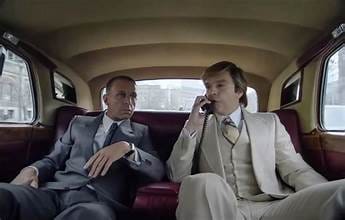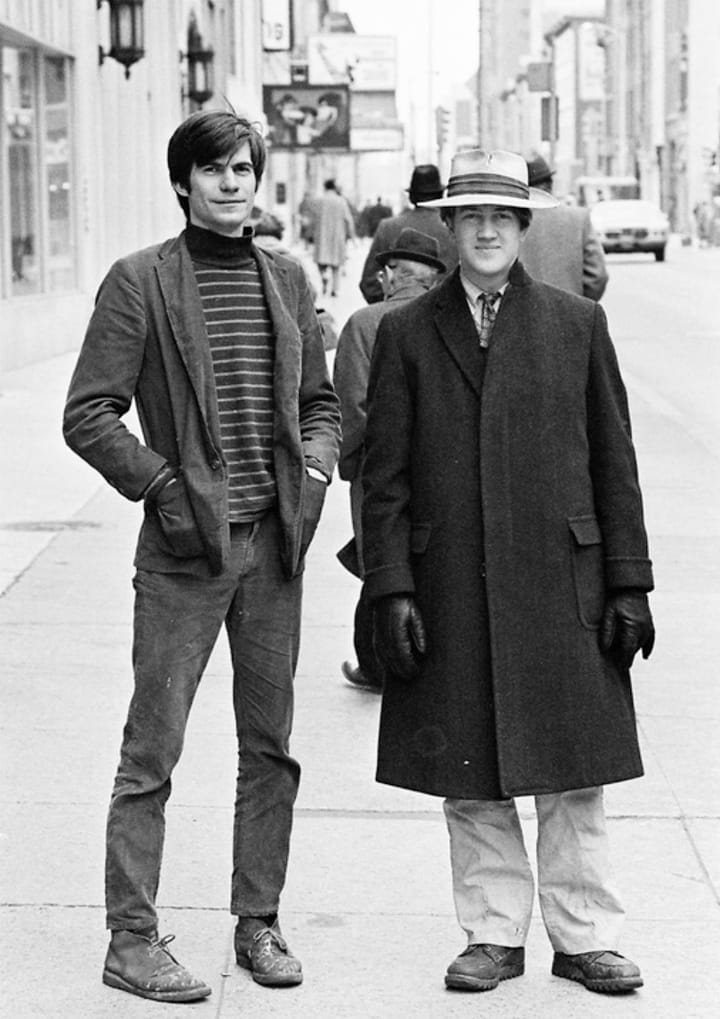A Time of Retribution

O.J. Simpson could have left a robust and positive legacy as one of America’s legendary sports heroes.
And there’s no American hero like a sports hero.
When he died this month of cancer, his painful story came to the most cheerless of endings.
My experience of O.J. is only slightly more personal than most. We had two encounters, each of which was brief, and yet they survive on a memory playback loop as somehow unforgettable.
Cue some noise like broken glass underfoot from my favorite garage band, The Clash:
And everybody say, "Is he all right?"
And everybody say, "Shine a light"
And everybody say, "It's not funny"
That's…O.J. Simpson, honey
That’s the crunching needle drop of the band’s “The Right Profile” as heard under the opening frames of a fine new documentary about photographer James Hamilton, “Uncropped”. They usefully borrowed the song with its original lyric (“That’s Montgomery Clift, honey”) to kick off their film, and I now borrow it from them, with a name change.
Call this post an account of how celebrity, especially celebrity with a strong scent of jailhouse disinfectant, finds an unexpected way to touch our generally humdrum lives. And a look at how a great photgrapher can capture all that.
Two anecdotes, then.
The first: one day in the second week of October 1979, I got a call from my sometime editor at the Village Voice, Michael Caruso, with the notion of covering a visit to Giants Stadium by the San Francisco 49ers and their no-longer-so-great running back, O.J. Simpson. I was an infrequent freelancer for them, articles now hard to locate. (For all the chatter about Tricia Romano’s very readable oral history about the Voice of that era--“The Freaks Came Out To Write”–-f you try to drill down online you won’t find such obscurities as my efforts.
But the added fillip to the assignment was that Hamilton was to supply the accompanying photo, and was by now well known for capturing an essence of whatever he clicked a shutter on.
It was clearly a moody story--Michael always had a keen eye for a scenario with an ample jigger of poignancy. After his Heisman Trophy-winning college career at U.S.C. had come a decade of becoming as grandly successful as a pro running back of any era. (His summiting 2,003 yards gained rushing in 1973 was the league record until Eric Dickerson broke it in 1984.)
O.J. was now too old and too broken, as happens to running backs only too quickly, to be effective. He’d been added to the 49ers roster as a sop of sorts to fans who knew he had grown up poor in San Francisco’s Potrero Hill. My father-in-law had been a district administrator and remembered him fondly; so did a friend of mine who had a track scholarship to U.S.C. The Giants game was coming only knee-deep in his final season, but the previous year the 49ers had won two games and lost 14, and were en route to the same tally in 1979.
It would be a struggle-laden decade-plus for Simpson until the fatal events that ended the lives of Nicole Brown Simpson and Ron Goldman in mid-1994, but O.J. was still profitably corporatizing his then quite clean and charismatic off-field brand. You could say he set a precedent for our present daft influencer culture—but there was a dirge-like feel to the enterprise.
He never lost his ability to project his own odd wisdom, a survivor’s—or conniver’s? —wisdom. “Thinking is what gets you caught from behind,” he once said, and with his speed and shiftiness compromised, his outing at the stadium was typical of his year—24 yards in 12 attempts. When he granted me the several minutes of pre-arranged solo chat time, he was cordial, philosophical, and stoically placid even as a as doctor stitched a small cut on his finger someone's cleat had inflicted.
But there had been a time when he spent scant moments on the ground after they handed him the ball.
The true point to depicting this moment is to call the attention of my kind readers to the Hamilton photo above. The full-eyed gaze belies a certain hesitancy to give off any vulnerability. One could read deeper into the assessing, not to say baleful stare at Hamilton as the trigger fires. O.J. might have seen the expert shooter as an interloper, however humbly so (for Hamilton had a manner both mellow and highly alert stood working his artisanal-looking Nikon F amidst the matte black, snickering motor drives wielded by the pack.
And thus passed our moment with The Juice.
Secondly, unrelated to the photography: It was some years later—it must have been the early 90s– I found myself running through Los Angeles International airport, probably after a visit on assignment for Rolling Stone. I had a bag strapped on, banging my side, a coffee, a ticket in my teeth. I could run a decently fast 500 yards in those my marathoning days, and as my desert boots slapped busily on the terminal floor dodging the slowpokes, to my left was--another runner.
Just as you have already guessed, this was in the days of Peak O.J., when he was taking down about half a million dollars annually from Hertz to enact his airport sprints: “The Superstar in Rent-a-Car.” But today he was simply late for the take-off from LAX to J.F.K., just like me.
Had he read the Voice piece, a measured envoi to his career? Almost certainly not. Did he remember my face? Also unlikely. But the sheer comic absurdity of the damaged-knees Juice and the former college safety, going stride for stride hell-bent for the gate, brought forth that undeniably winning if sidelong O.J. smile.
We hit the newsstand stride for stride. Faced the racks, panting slightly. “What’s good to read?” came the inquiry. This was a moment in which John Grisham was having huge success with “The Firm,” the best-selling fiction book of 1991.
And here is where coincidence meets some preposterous sense of pre-ordination, because my eyes settled on a paperback two feet away.
Again, there was in fact not a minute to waste.
The book I saw had come out in 1989 as a hardbound the striving Wynwood Press, and now that “The Firm” had become a monster hit, Wynwood had issued a paperback—though scrapping the subtitle fledging author Grisham had given the hardback—”A Novel of Retribution”.
Let’s go back to the lyric above: “And everybody say, ‘It’s not funny…” to state that what happened within three years of this moment is neither funny nor trivial. Two people died horribly, and the man beside me at the book rack would walk away acquitted. So, apologies to the universe, and I expect to be questioned for this during The Rapture when there are no coincidences, only a noisy, bloody darkness. So, I read out the title.
“This one maybe? `A Time to Kill’.”
If there’s a lesson in this admittedly absurdist parable, maybe it can be detected in this familiar quatrain from “The Rubaiyat of Omar Khayyam," one that would-be philosophical types have quoted for many decades:
The Moving Finger writes; and, having writ,
Moves on: nor all thy Piety nor Wit
Shall lure it back to cancel half a Line,
Nor all thy Tears wash out a Word of it.
O.J. put it his own way, and beneath the posturing he sounds like a man chastened by time, decrepitude, profound shame, and finally hopelessness: “There is no prayer so blessed as the prayer which asks for nothing.”
Is it patriotism or religiosity which is the last refuge of scoundrels?
Or maybe he expired on that last day still believing this, and I see this in Hamilton’s shot:
“I don’t understand what I did wrong except live a life that everyone is jealous of.”
#
To see the film: The 111-miniute documentary “Uncropped” will show up in select art houses today, April 26th, and on May 7th will be viewable on Amazon and Apple TV.
The trailer:
https://www.youtube.com/watch?v=k8p0yVMxaxk





Comments ()